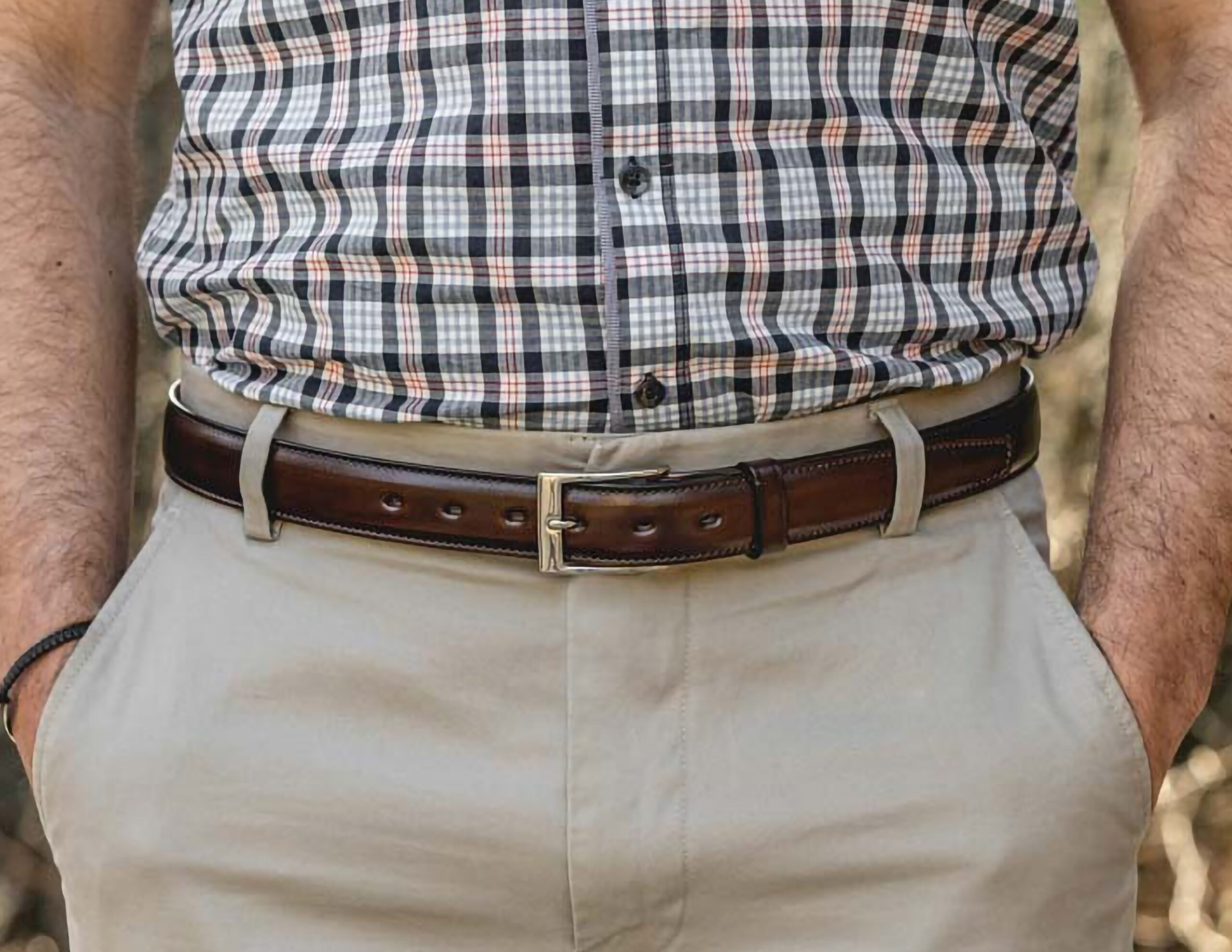Galco Holsters SB1 Dress Holster Belt 1 ¼” in Havana
A belt provides the foundation of a concealed carry system. A suitable belt can enhance your carry system, while a poor one can ruin it. A gun belt is not a luxury, but a necessity. Regular belts and gun belts may look alike, but they have significant differences. Regular belts are meant for style, not function. They do not have the stiffness and stability to support a holstered weapon and keep it in place. A gun belt is made for that purpose. However, choosing the right gun belt can be a challenge, given the many options available.
Dress Belts & Casual Belts
All belts can generally be placed into one of two categories: dress belts and casual belts. Dress belts (also referred to as formal belts) and casual belts differ in the occasion they are worn, size, materials, color, and buckle style. Some dress belts may also work as casual belts but casual belts won’t work as dress belts.
When an outfit clearly falls into one category, you should choose the belt that best pairs with it. Dress belts are primarily for wearing with suits and business attire, but can also work well with more formal sports jackets/blazers and dressier trousers, such as nicer chinos. Casual belts are obviously worn with casual attire. If you’re wearing an untucked shirt, you obviously have more freedom to pick a belt since it will not be visible.
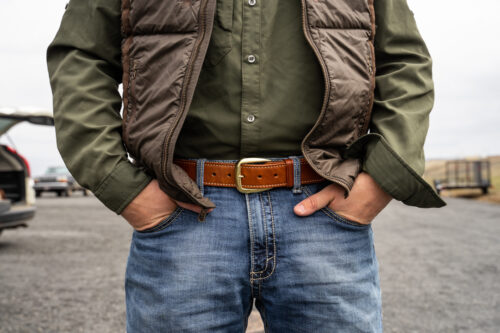
Dress Gun Belt Basics
Dress belts share certain common characteristics that define them as dress belts. To help you choose the right dress gun belt, let’s take a look at the specific attributes of a dress belt and what you should keep in mind when selecting a dress gun belt.
When selecting the proper belt to wear, there are some fashion “rules” that need to be taken into consideration. A belt should complete and compliment an outfit, making it look polished. The general fashion rule of thumb is to match your leathers and match your metals (other than a wedding ring). If you’re wearing casual shoes, the belt should complement rather than match. The color and texture of your belt should pair with your shoes. Matching the color of the metals is a less observed rule. The less formal the combinations become, the more leeway you have.
The color of a dress belt should match the color of the shoes that are being worn. Every man should own at least two dress belts: a black dress belt and a brown dress belt. Although there are reversible dress belts with black and brown dyed sides to match whatever shoes are being worn, these belts are generally lesser quality.
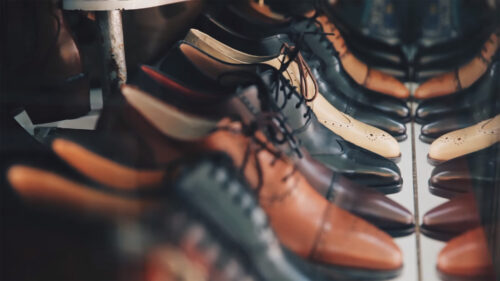
A dress belt should always be leather. It should have a semi- or high-shine finish. It should not only be the same color but have the same level of shine as your shoes. Matte finishes are considered too casual. The strap material should have a tight grain, smooth leather backing, and be devoid of excessive decoration. The stitching should be recessed for a smooth look and match the color of the belt. The simpler the better.
Width is an important consideration in the selection of a belt. A dress belt should ideally be between 1.25” to 1.5” in width. If a belt is any wider than that, it’s a casual belt and isn’t suitable for more formal attire. If you have a lean build or are wearing tapered pants, go with a 1.25” width. A 1.25” width has become the dress belt standard and will fit the belt loops on most men’s dress pants. Less than that and you’re getting into woman’s belt territory.
Belt thickness is also a consideration. Thinner belts are considered more formal. Dress belts are typically around 0.125” in thickness but this is insufficient to adequately support the weight of a gun. Dress gun belts are typically around 0.25” in thickness. Some dress gun belts feature feathered/skived edges to disguise the thickness for a more standard dress belt appearance.
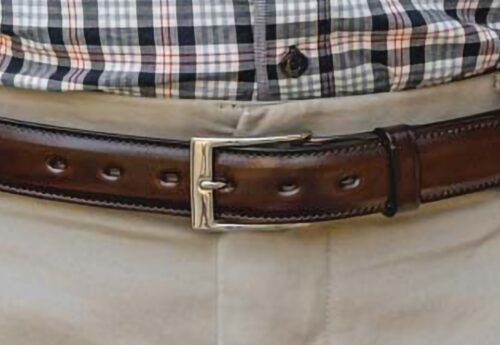
How and what you carry is a consideration. A belt must be sufficiently rigid to support your gear and keep it consistently positioned but not so rigid that it’s uncomfortable to wear. Although OWB holsters require a thicker and stiffer belt, less support is generally needed for IWB carry. Many gun belts are too stiff and too rigid for comfortable discreet IWB carry.
Leather gun belts come in a variety of construction methods: single-layer, two-layer and reinforced. Two-layer dress gun belts are the most common and, if properly constructed, make a better gun belt. They also allow for the addition of interior reinforcement.
Reinforced gun belts may use nylon, polymer or even spring steel for reinforcement, depending on the manufacturer. The reinforcement keeps the belt from stretching long term, prolonging the life of the belt and can add rigidity. Leather will stretch and sag over time without reinforcement.
You will often see the terms “full grain leather,” “top grain leather” or “genuine leather” used. The term “genuine leather” is a marketing phrase that’s synonymous with lower quality leather. Avoid leather products marketed as genuine leather.
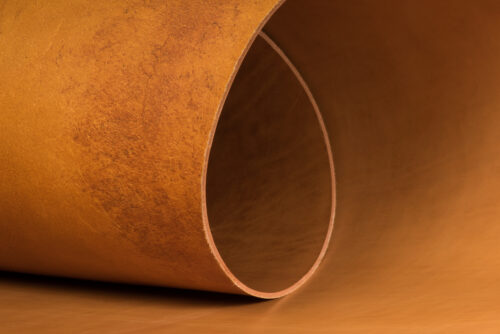
A dress gun belt should be full grain vegetable tanned leather. Full grain leather is the highest quality of leather. It’s also the most expensive. Full grain leather is the entire hide of the animal once the hair has been removed and the pelt is tanned. The natural grain fibers make it strong and durable. Although more costly and time consuming, vegetable tanning produces plumper, firmer and more water-resistant leather than other methods of tanning.
Top grain leather is a lesser grade of leather than full grain leather. It’s made by removing the outermost layer of the animal hide, hence the term “top grain.” It’s thinner and less durable than full grain leather. Hides prepared as top grain leather may sometimes be embossed and faux finished to look like exotic leather.
You may sometimes see the term “aniline leather” used. Aniline leather is leather that’s been dyed using the aniline dying process. It’s generally produced from full grain leather. As the resulting product retains the hide’s natural surface, only high-quality leather is suitable for aniline finishing.
The hides and skins from almost any animal can be converted to leather. The pelt of a full-grown or larger animal is called a hide, such as cowhide, bullhide, steerhide and horsehide. The pelt of a reptile, fish or smaller or juvenile animal is called a skin, such as snakeskin, sharkskin, sheepskin and calfskin.
Most leather gun belts are made from either bullhide or steerhide. You’ll also find belts made from exotic leathers, such as alligator, crocodile, elephant, bison, horse, ostrich, shark and stingray. Exotic leathers are generally considered to be more casual, but they can work as formal when in a darker color. So if you’re lusting for an exotic leather dress gun belt to match your exotic leather dress shoes or western boots, fret not. Exotic leather belts are typically lined with a layer of bullhide or steerhide.
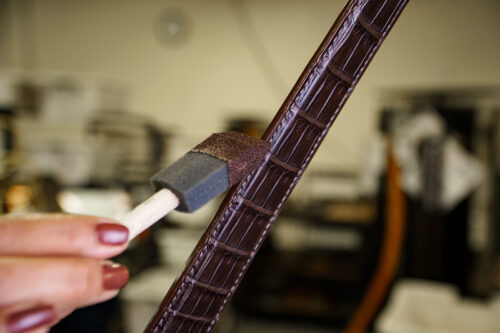
The hardware also matters when selecting a belt. The buckle of a dress belt should be fairly minimalist without any excessive styling. Dress belt buckles are smaller, flatter and sleeker than those found on casual belts. Most dress belts have a frame style buckle. It should have a single prong and have a shiny finish.
Gun belts are subjected to substantially more stress than regular belts since they support the weight of a gun. A good gun belt needs to have durable hardware to secure the belt. What matters most in this regard is how the buckle secures to the belt strap. A variety of means may be employed to attach the buckle to a leather belt strap, including Chicago screws, clasps and snaps. My preference is for Chicago screws. Clasp- and snap-on belt straps are fine, but they’re only as good as the clasps or snaps themselves.
The size and adjustment range are are important considerations with any belt and even more so with gun belt. How and what you carry will be a determinant of the optimal belt length. For example, if you’ll be wearing a holster and/or magazine carrier IWB it may change the belt size that you need.
Conventional (non-ratcheting/non-slide) leather gun belts typically have between five and nine holes for size adjustment. Sizing is typically based on the center hole. All gun belt manufacturers have belt sizing instructions for their belts. Be aware that belt sizing does differ from manufacturer to manufacturer, so use the manufacturer’s measurement guidelines.
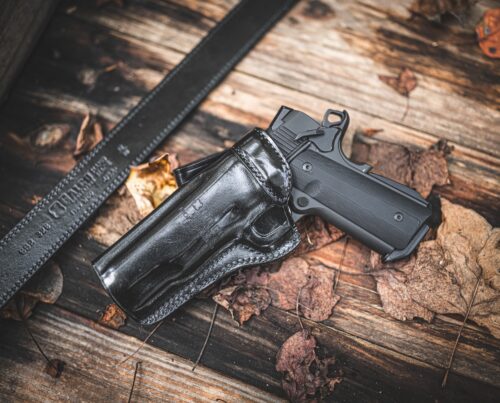
To Sum Up
Selecting the right belt and holster combination is as important as selecting the right gun. In addition to standard dress belt styling considerations, a dress gun belt must also be designed to support the weight of a handgun. Always buy quality. Choosing the right dress gun belt will allow you to pack with impeccable style.
Source
Galco Holsters
GalcoHolsters.com
*The views and opinions expressed on this website are solely those of the original authors and contributors. These views and opinions do not necessarily represent those of Spotter Up Magazine, the administrative staff, and/or any/all contributors to this site.
